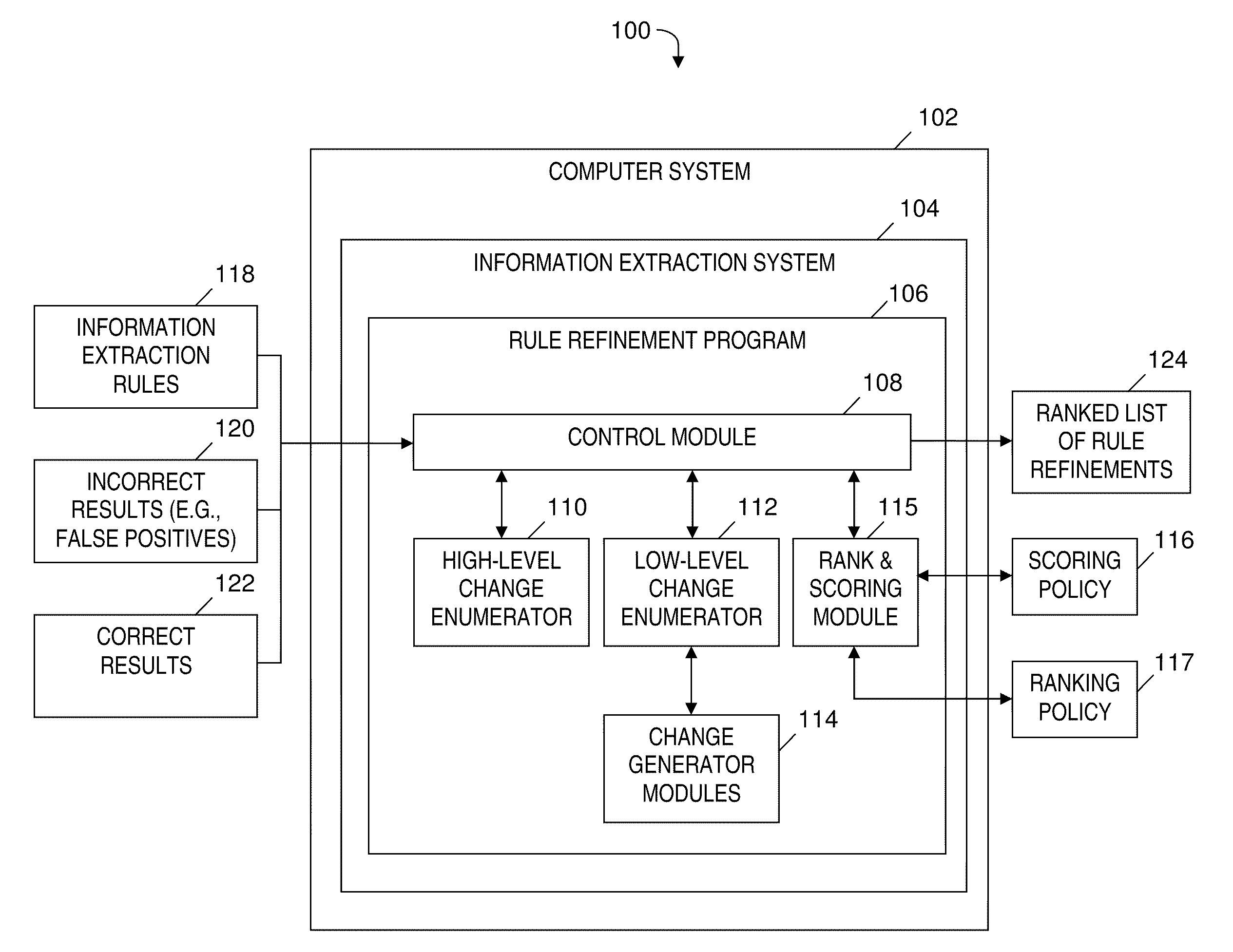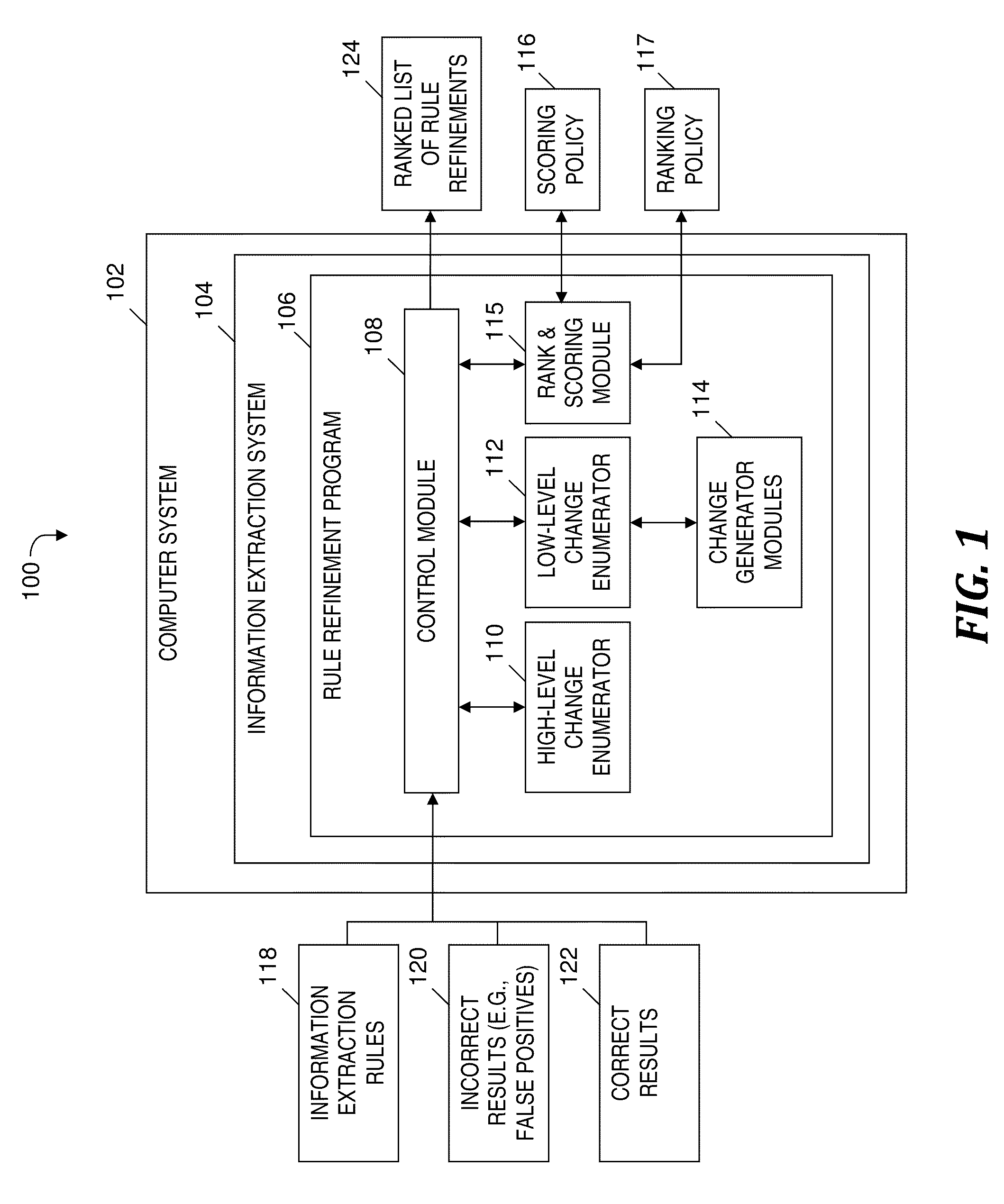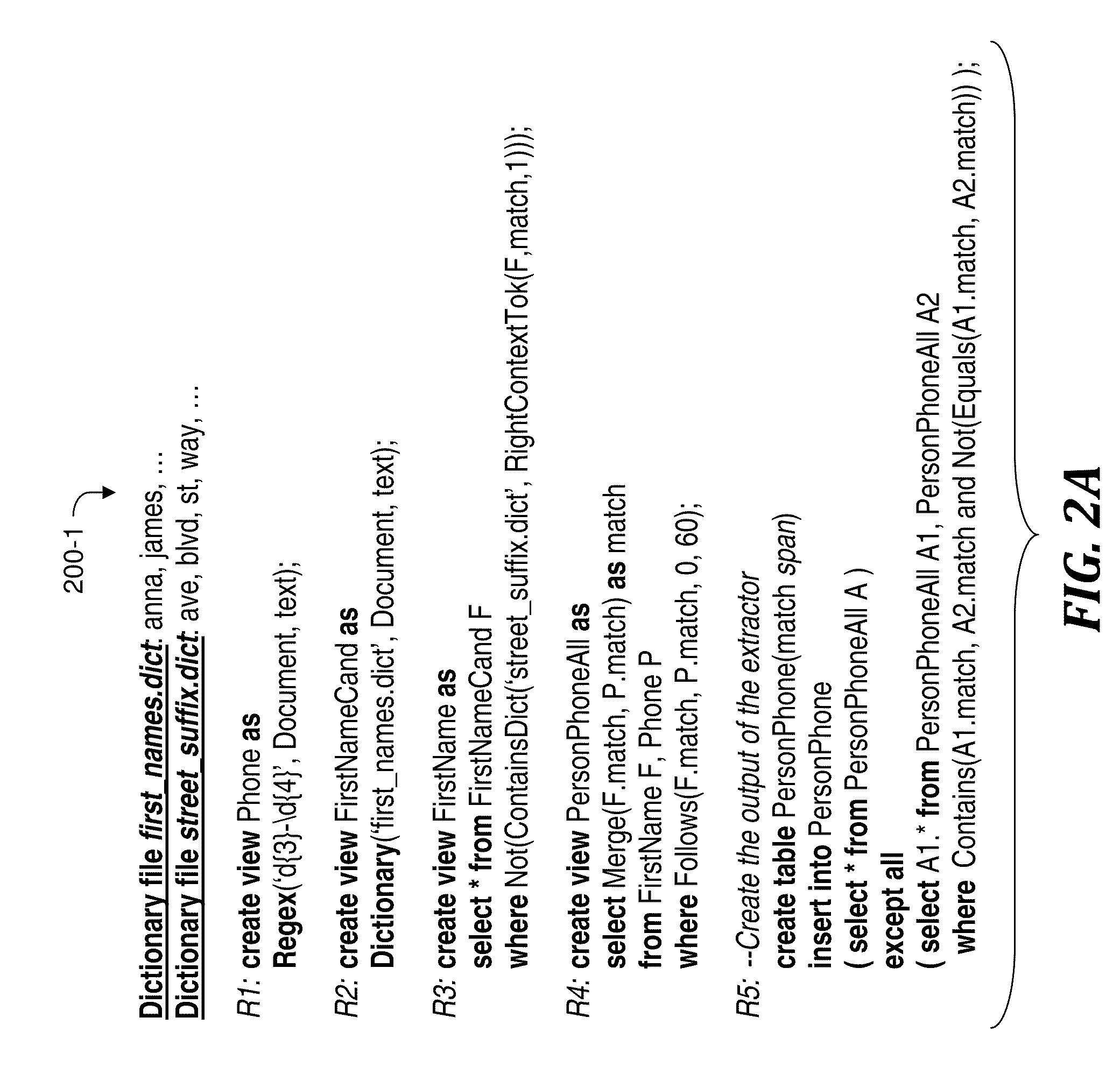Automatic refinement of information extraction rules
a technology of information extraction and automatic refinement, applied in the field of information extraction, can solve the problems of inability to identify the most time-consuming and time-consuming manual task of identifying the rule refinement, and the interaction between the rules may be very complex, so as to facilitate automatic rule refinement
- Summary
- Abstract
- Description
- Claims
- Application Information
AI Technical Summary
Benefits of technology
Problems solved by technology
Method used
Image
Examples
experiment 1
[0128] In this experiment, the system is run for k iterations starting from the baseline rule set. After each iteration, the refinement with the highest improvement in F1-measure on the training set is automatically applied. Table 1 shows the F1-measure achieved on the test set of various datasets with the refined rule sets for the Person and PersonPhone tasks, when k is varied from 1 to 5. As can be seen, the system achieves improvements in F1-measure between 6% and 26% after only a few iterations. Tables 2 and 3 show precision and recall, respectively. The improvement in F1-measure does not arise at the expense of recall. Indeed, as shown in Tables 2 and 3 for the Enron and EnronPP datasets, the precision after 5 iterations improves greatly when compared to the baseline rule set, while the recall decreases only marginally.
[0129]
TABLE 1F1 Score After Each Iteration of ChangeInitial1 Itera-2 Itera-3 Itera-4 Itera-5 Itera-Data SetScoretiontionstionstionstionsEnron0.4790.6500.7100.728...
experiment 2
[0132] In this experiment the top refinements generated by the system are compared with those devised by human experts. For this purpose, a user study was conducted in which two experts A and B were given one hour to improve the rule set for the Person task using the training set in the Enron dataset. Both experts are professional information extraction rule developers. To ensure a fair comparison, the experts were restricted to types of rule refinements supported in the current implementation, as described in Section 6.2.
[0133]Table 4 shows the refinements of the two experts and the F1-measure improvement achieved after each refinement on the test set for expert A. (Expert B's refinements are a subset of expert A's.) Table 4 also shows the rank of each expert refinement in the list automatically generated by the system in the first iteration (i.e., I1), as well as the second iteration (i.e., I2) after applying the topmost refinement. It was observed that the top refinement suggeste...
PUM
 Login to View More
Login to View More Abstract
Description
Claims
Application Information
 Login to View More
Login to View More - R&D
- Intellectual Property
- Life Sciences
- Materials
- Tech Scout
- Unparalleled Data Quality
- Higher Quality Content
- 60% Fewer Hallucinations
Browse by: Latest US Patents, China's latest patents, Technical Efficacy Thesaurus, Application Domain, Technology Topic, Popular Technical Reports.
© 2025 PatSnap. All rights reserved.Legal|Privacy policy|Modern Slavery Act Transparency Statement|Sitemap|About US| Contact US: help@patsnap.com



